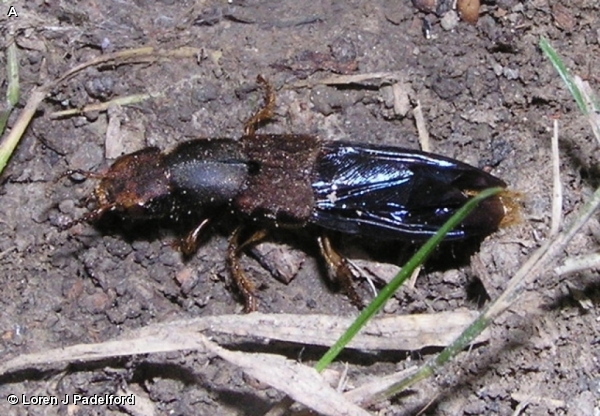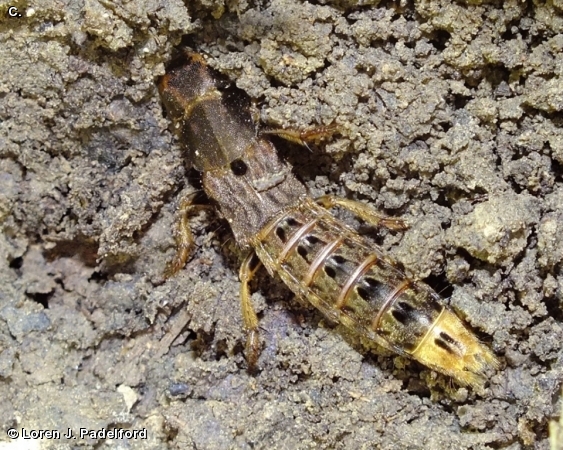
This beetle is to 1 inch in size and is slender and parallel sided. It is dark brown with the elytra (wing covers) and abdomen dorsally marked with brownish spots. The antennae are usually 11 segmented and thin. Rove beetles are generally recognized by their short wing covers which leave much of the abdomen exposed.
This beetle is found on carrion, dung and decaying fungi. larva usually occur in the same habitat as adults. It is widely distributed especially in the eastern U.S. Its occurrence in Fontenelle Forest is unknown. This specimen was photographed on south stream trail.
Rove beetles are sleek and snakelike and often are mistaken for earwigs. P. maculosus is one of our largest rove beetles. When flying they are often mistaken for large wasps. Most rove beetles are predators as adults and larvae, living in a variety of niches. None are harmful to humans and many are beneficial as predators on insect pests.
Disclaimer: The content of NatureSearch is provided by dedicated volunteer Naturalists of Fontenelle Forest who strive to provide the most accurate information available. Contributors of the images retain their copyrights. The point of contact for this page is: Eric Scholar.


